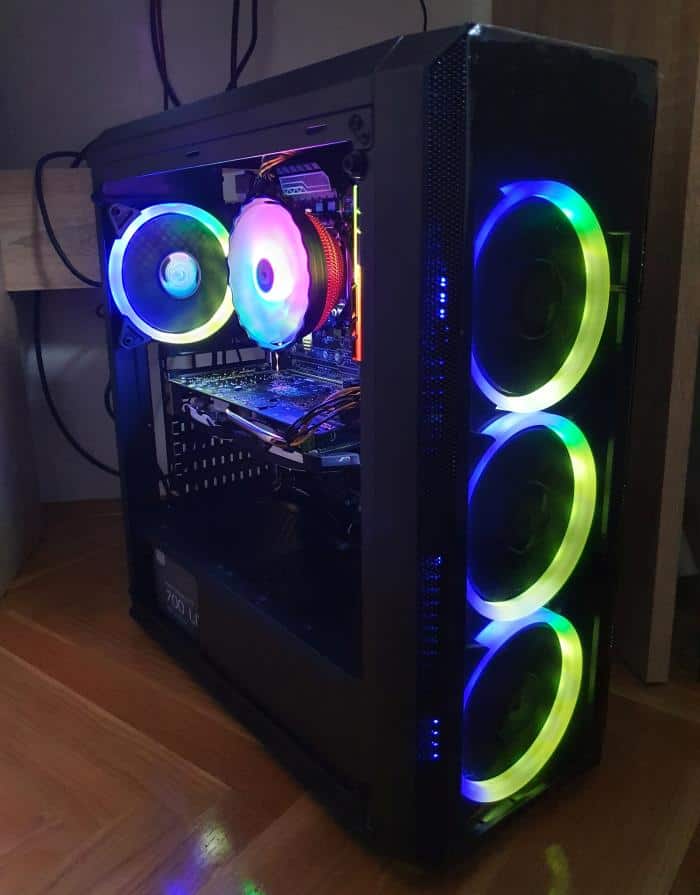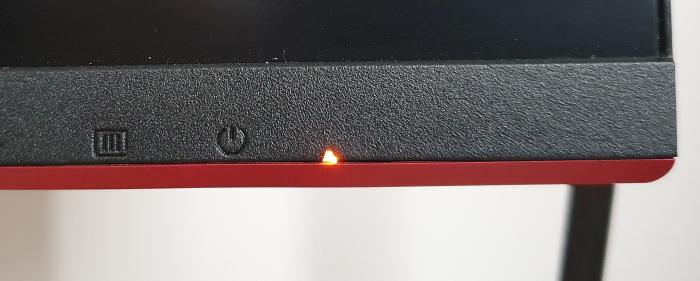Have you ever turned on your PC, but there’s no signal to monitor?
More precisely, the case receives electricity, the fans rotate, the RGB lighting works, and the power LED on the case lights up, but the “image” doesn’t appear on the monitor. Do you panic in a scenario like this? Fortunately, there are ways to resolve this situation if we do troubleshooting correctly.
Several situations can lead to this problem. They include the following critical points of your hardware system: monitor, graphics card, motherboard, RAM, and power supply (PSU). The worst-case scenario for your business or gaming is when you usually shut down your computer, but there’s no boot the next time you turn it on.
Let’s do a troubleshoot
1. The smell of burning?
Suppose you smell an unfamiliar odor from your case. In that case, the smell of lit electronics ( or the like), unplug the power cord immediately. This situation is already a more complex problem that can cost you quite a bit if there’s a fault in the power supply unit.
Fortunately, the newer power supplies have built-in protection against overheating and overvoltage. So there should be no scenario of other components, such as the motherboard or graphics card, being damaged. However, unplug the power cord.
This kind of job is for authorized service. Don’t attempt to repair the power supply, motherboard, or graphics card yourself.

2. The case usually works?
If there’s no problem, as in step 1, turn off your case by holding the power button for a few seconds and then turn it on again. Did you hear a beep sound when you turned on the computer (if you have a BIOS speaker on the system board)? This beep sound can help you quickly identify and localize the problem, thanks to BIOS sound codes.
If you don’t see the BIOS speaker on the motherboard, look for it because it usually comes with the case mounting equipment.

Do you hear only one short ”beep” while turning on the computer? That’s typical sound – the system is OK. This sound is a good sign because the BIOS indicates no problems with the components inside the case, but it cannot reveal all the issues. Whether you have a BIOS speaker or not, open the side panel to see the inside of the case in detail.
Do all fans rotate; on the graphics card, processor, and case?
- Visually check the contacts on the power cords on all PSU-powered components.
- If you find something suspicious, shut down your computer immediately.
- Unplug the power cord from the power supply.
- Check all contacts manually (especially between the graphics card and the PCI-ex slot), and check all power cords for loose connections.
If you find that some contacts are loose and you receive a signal on the monitor when you turn on the computer, you have solved the problem. However, If you find that everything is OK with the contacts and there is still no signal on the monitor, proceed to the next steps.

3. But No Signal to Monitor?
Ensure the video cable has a good connection between the graphics card and the monitor. Suppose you turn on the monitor correctly and all cables are securely connected (power cord and video cable). In that case, you need to check the monitor itself on another computer.
Do you have another computer or laptop close by to try out the controversial monitor?
- Carefully disconnect the monitor power cord from the extension cord or outlet.
- Also, carefully disconnect the video cable from the graphics card.
- When moving to another computer, leave cables on the testing monitor ( power and video cable).
The video cable can be a VGA, DVI, HDMI, or Display Port. Read the differences between the video connectors when choosing a monitor. Connect the monitor to another computer or laptop.
If there is still no image, the monitor is most likely defective. You must consult an authorized repair service or contact the seller if the warranty is valid. If an image appears and the monitor works without problems on another computer, the next step is to examine the graphics card.
4. Examine the graphics card
We will now examine whether everything is OK with the graphics card:
- Turn off the computer that isn’t sending a signal to the monitor.
- If the monitor runs smoothly on another computer, return it to its original location for further analysis.
- Plug the power cord into an extension or outlet, and connect the video cable to the graphics card.
- Turn on the monitor.
Is your primary graphics card integrated or discrete?
Integrated graphics card
You can quickly fix the problem if you have an integrated graphics card. We now want to try another video output, but only if the graphics card has multiple video outputs (HDMI and VGA or DVI).
Connect the integrated graphics card and monitor with another video cable.
For example, you initially connected the monitor to the graphics via an HDMI cable. There was no signal on the monitor? Then do the following:
- Connect the VGA output from the graphics card to the VGA input on the monitor via a VGA cable.
- Turn on the computer when you connect another video cable (remove the primary video cable –HDMI).
Did a picture appear?
If there’s still no signal on the monitor, the problem is with the integrated graphics card.
- Shut down the computer, and unplug the power cord.
- If you have a discrete graphics card, insert it into the PCI-ex slot (you can take it for a test from another computer that usually works or borrows it from a friend)
- Connect the video cable that goes to the monitor.
- Turn on the power supply, and start the computer.
If an image appears on the screen, the problem is definitely in your integrated graphics card. Consider purchasing a discrete graphics card. If there’s still no signal on the monitor, the solution is that you need to service the motherboard (at an authorized service center) or get another one.
Notice:
In addition to the motherboard, there may be a problem with RAM. It’s not a bad idea to remove the RAM from the motherboard and insert another RAM that you’re sure works.
Only then will you be sure if the motherboard is problematic. Also, it’s unlikely that the processor is faulty.
Discrete graphics card
The procedure is similar to that of an integrated graphics card. If your motherboard has an integrated graphics card in addition to the discrete graphics card, do the following:
- Turn off the computer, unplug the power cord,
- Remove the discrete graphics card,
- Plug the video cable into the video output of the integrated graphics card,
- Turn on the power supply and start the computer.
If you don’t have a signal to monitor with an integrated graphics card, the problem is with the motherboard or RAM. (I will repeat that the BIOS postcode sound will reveal the issue in many cases.)
Suppose you have an image on the monitor. In that case, your discrete graphics card has a problem. For additional verification, try connecting it to the monitor via other video outputs to ensure it gives a video signal.
Also, try a graphics card on another computer. The problem may be up to the power supply unit or motherboard if it works. The trivial problem may be that the contacts aren’t good between the graphics card and the PCI-ex slot. Check the cable that powers the graphics card (if there is additional power).
So, check everything twice to make sure all contacts are good.
Conclusion
Don’t panic if you accidentally turn on the computer but don’t have a signal to monitor. According to Murphy’s Law, a problem always happens when you need it the least. Still, you can come to a solution with the proper analysis. Maybe something is banal, and it only takes a few minutes for everything to be OK again.
It would be good to read this article if you don’t have a signal on the monitor and solve a problem most efficiently. If you have any additional questions or suggestions, don’t hesitate to leave a comment.








